5 MHz / 60m band - the next frontier
Motivation:
The amateur radio shortwave spectrum has been extended
to the 5 MHz range recently.
At the closing meeting of the 2015 ITU World Radiocommunication Conference
(WRC-15) on 27 November 2015, amongst the Final Acts signed into the
International Radio Regulations was one approving A
Worldwide Frequency Allocation of 5351.5–5366.5 kHz to the Amateur
Service on a secondary basis.
The ITU's enhanced band allocation limits most amateurs to 15 watts
effective isotropic radiated power (EIRP), with some countries allowing 25
W EIRP.
The ITU allocation will come into effect January 1, 2017, after which each
country's national administration must formally revise their rules to
permit amateur operation.
So far there is a hotchpotch of different channel- / block- and frequency
allocations, differing from country to country.
Hopefully this situation will be cleared within the near future.
However, this Wikipedia
article gives a superb overview on the current frequency allocations
in the 5 MHz / 60 m band.
Receiving:
Prior to December 2016, german amateur radio operators
were still waiting for a frequency allocation of the 5 MHz / 60 m band
from their regulation authority.
So we were restricted to receive-only operation.
The image below shows the receive coverage up
to November 2016 using the following equipment:
- a PA0RDT
mini-whip receive antenna.
There are several kits available in the Internet, even fully
assembled antenna and power-feed units.
But you may also set up the PCB yourself by milling a single-sided
copper-plated board.
- my good old Alinco DX-77
TRX
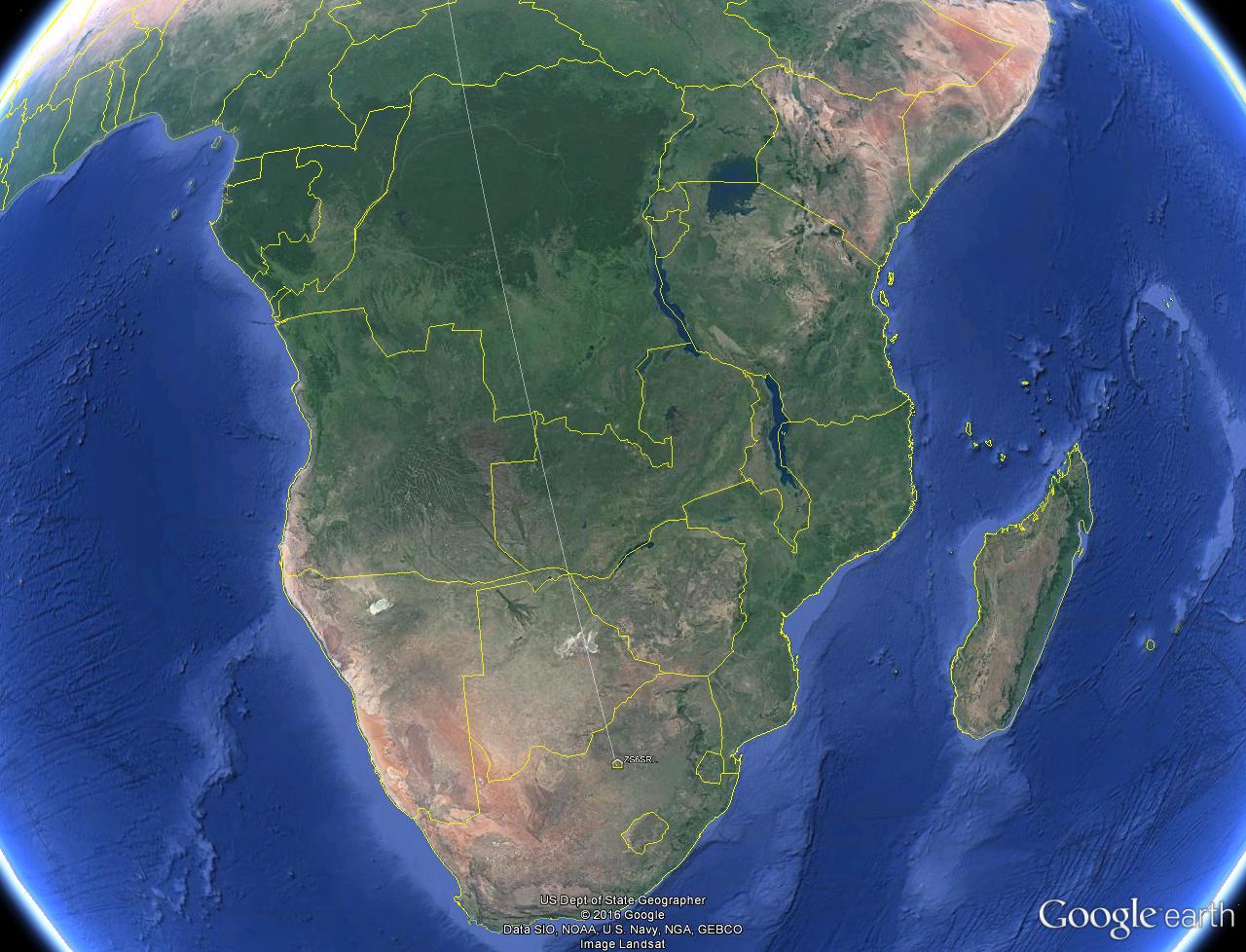
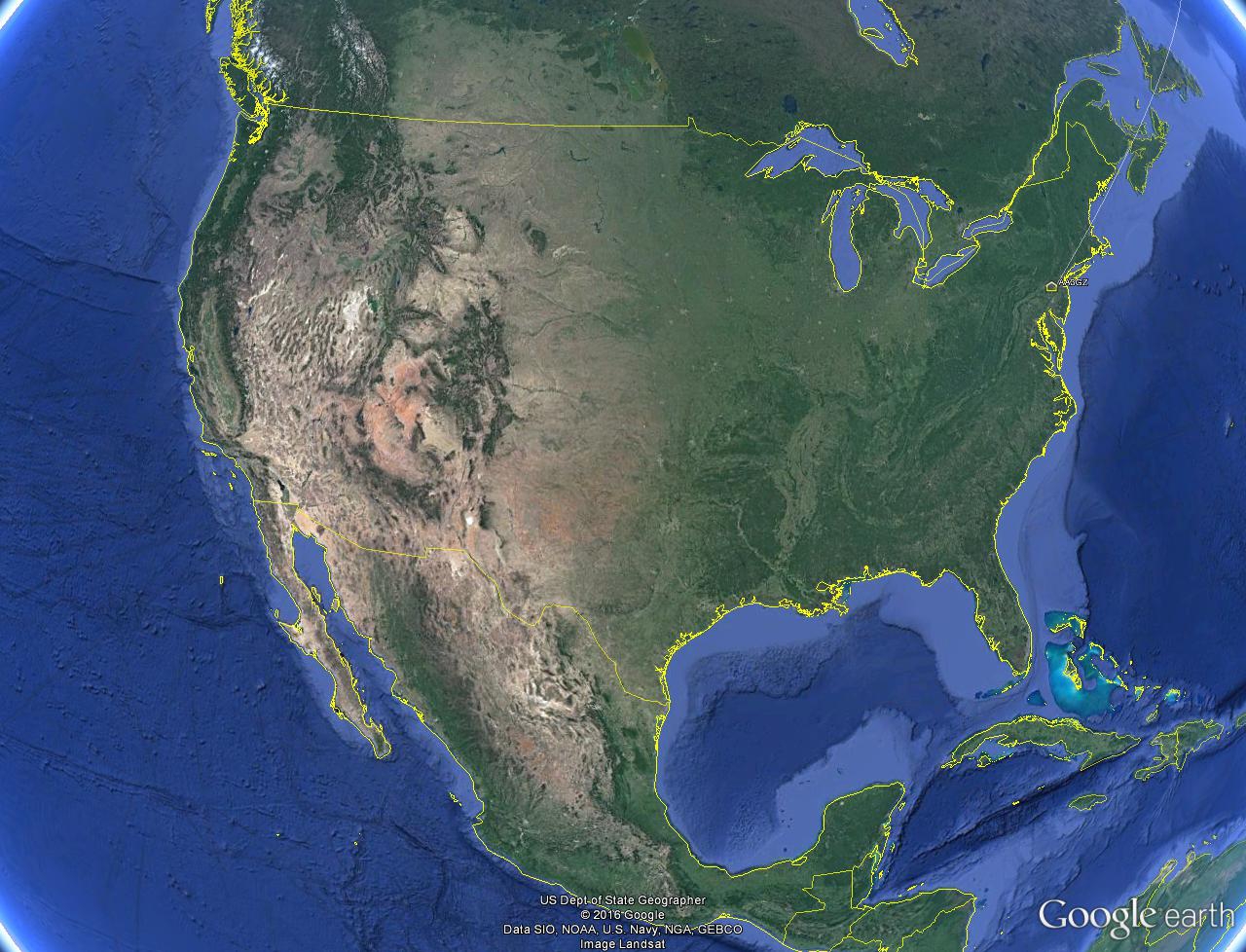
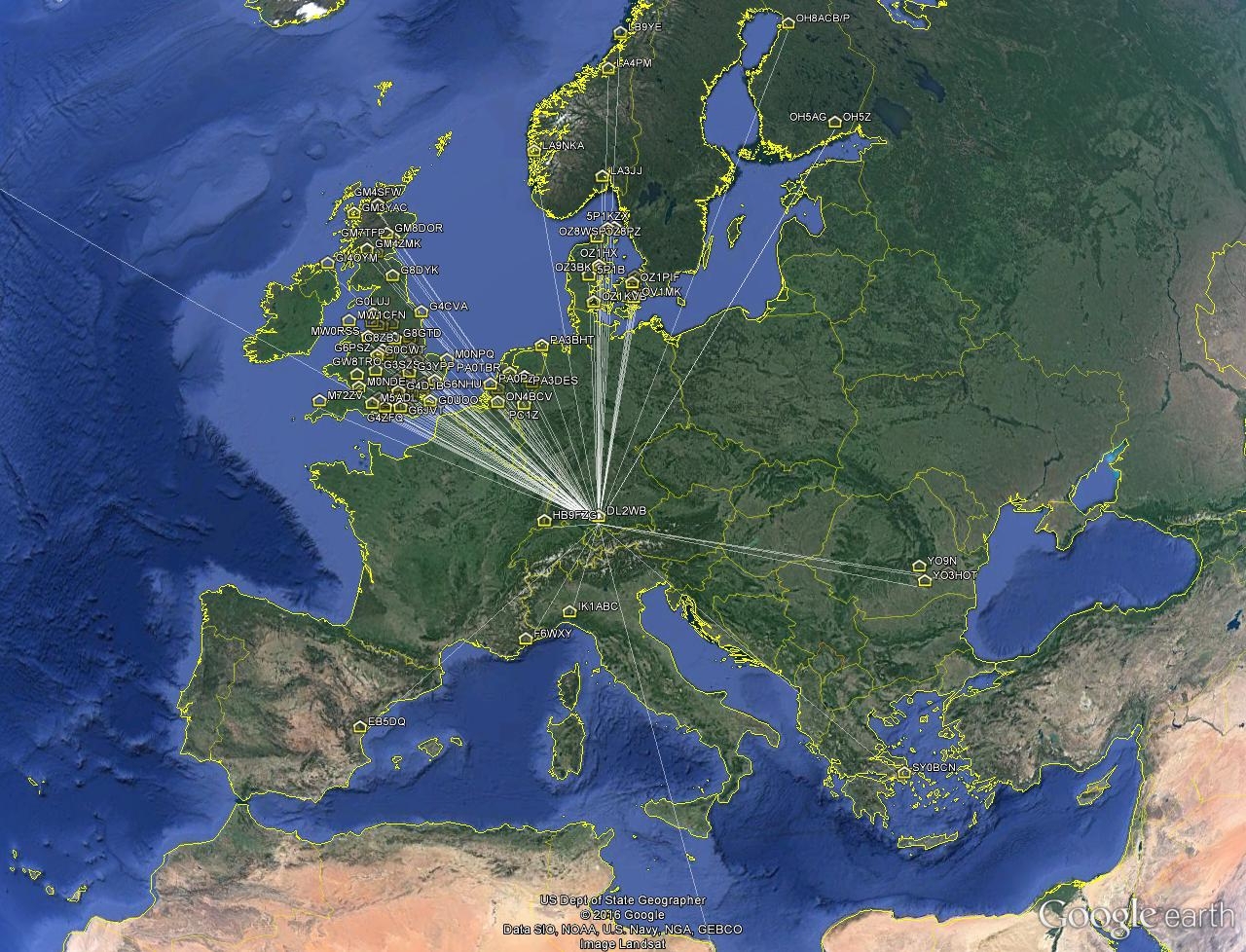
Transmitting
QRPp:
After the german regulatory authority granted amateur
radio allocation on 5 MHz in late December 2016, I set up a magnetic loop
antenna.
The loop has a trapezoid shape with ca. 6 m circumference.
It is made up of 9 parallel braided copper wires of 0.5 mm² each (so it is
a loop with 1 winding).
Resonance is achieved using ca. 1 m of RG-62 coax used as a cylindrical
capacitor.
With an additional 1:3 balun I could transform the loop impedance up to
ca. 50 Ohm for coax feeding.
Using the Magnetic
loop calculator by DG0KW, I have calculated the loop "gain" as -13
dBi.
With 200 mW (23 dBm) TX output and the above simulated antenna gain,
I have calculated an equivalent isotropical radiated power (EIRP) of ca.
10 dBm EIRP (= 10 mW EIRP)
Reception reports received so far:
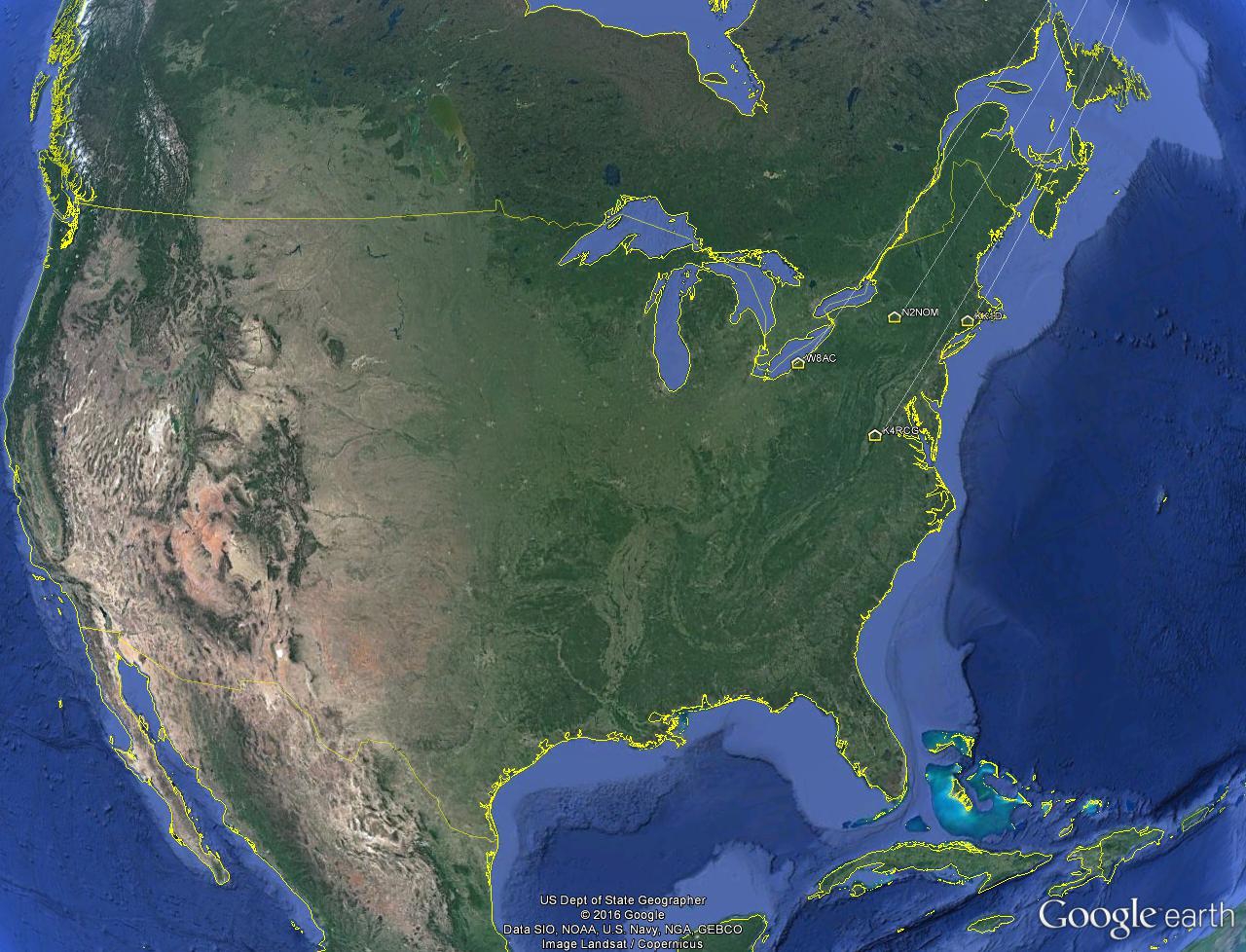
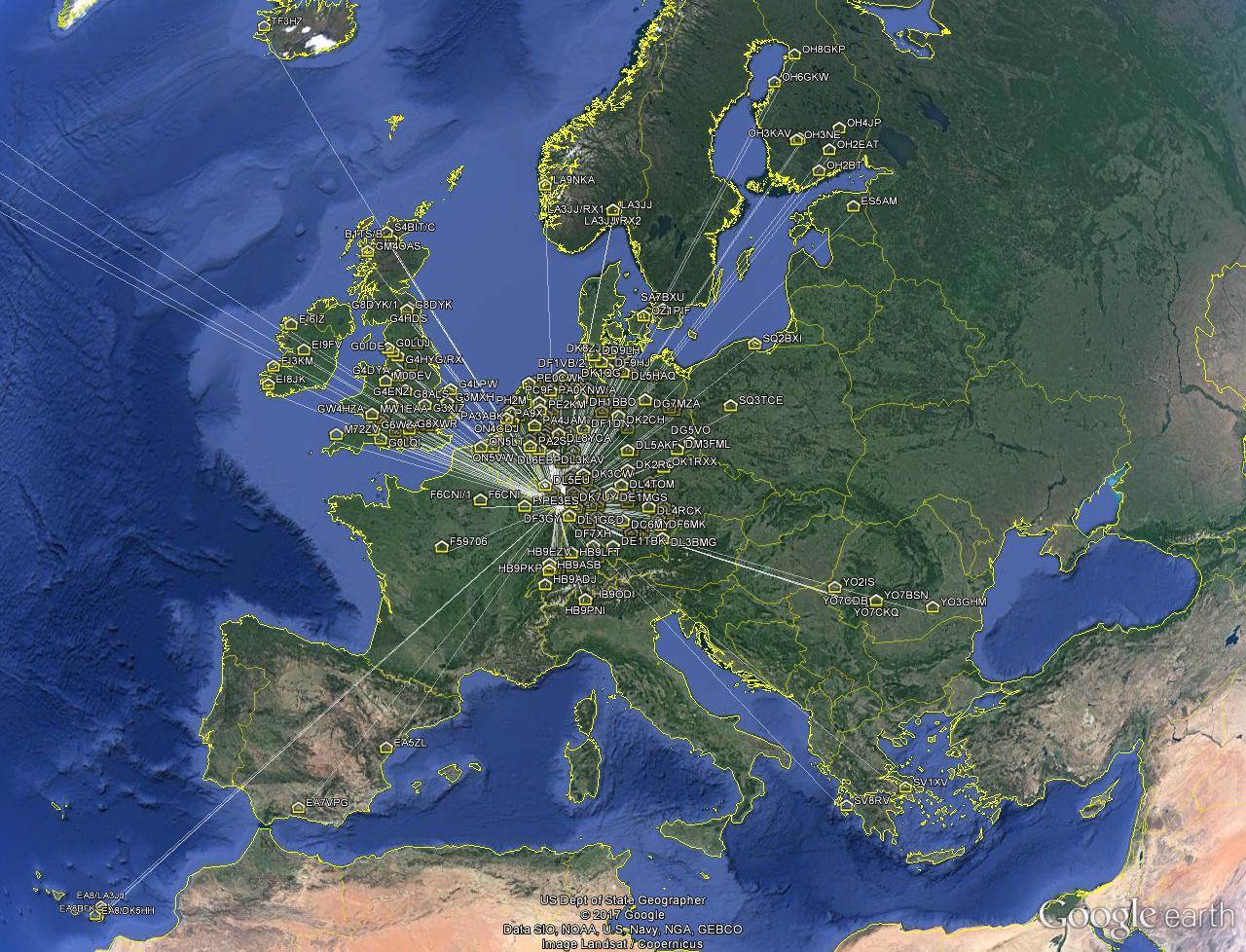
Possible
upgrade from QRPp to QRP:
In the next step I have already prepared a 25
W amplifier.
Using it far below its capability (ca. 5 W output), the achieved radiated
power may be ca. 250 mW EIRP.
Due to the good results with 10 mW EIRP
so far, the amplifier rests in the shelf ;-)
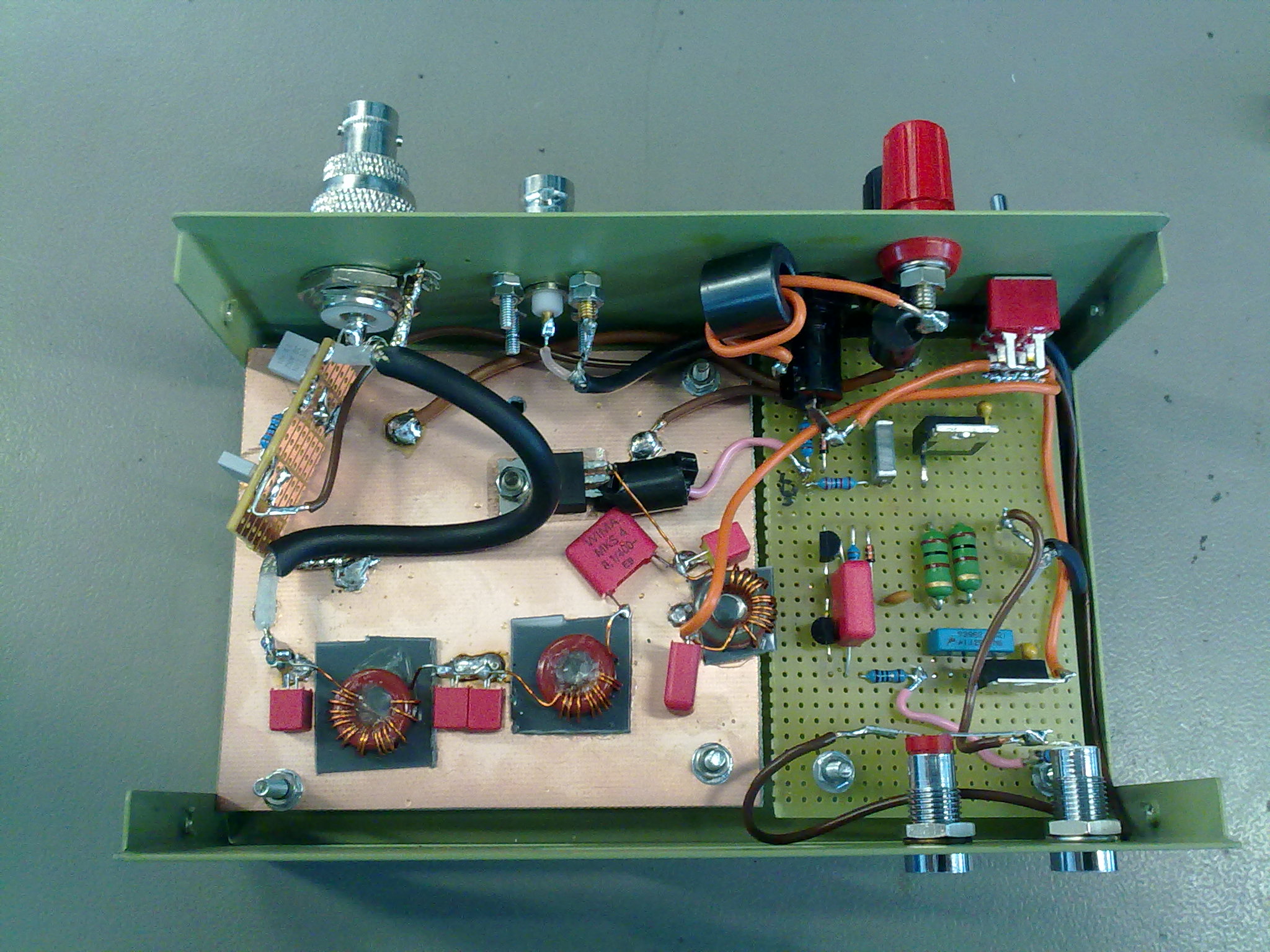
back to start





